Your Cart is Empty
Recent Articles
- Discover the Enhanced Features of Lands Design 6: Intuitive Interface, Rhino Plugin Integration, and Advanced Design Tools
- Efficiency Meets Innovation: SketchUp 2024 Unveiled
- Maxon One Spring 2024 Release Packs Particle Power, Toon Shading, and More
- TurboCAD 2024 Unveiled by IMSI Design: Discover the New Features and Enhancements
- Exploring the Latest InfraWorks 2025 Updates
- Introducing the Latest Innovations in Autodesk's ReCap Pro 2025
- Discover the Latest Enhancements in Civil 3D 2025
- Exploring the Newest Features and Enhancements in Revit 2025
- Explore the Latest Features in Vantage 2.3 Update
- Explore the Latest AutoCAD 2025 Enhancements: Activity Insight, Smart Blocks, and Apple Silicon Support
The Edge: Andy Lasseter’s Lighting Design
June 25, 2013 5 min read
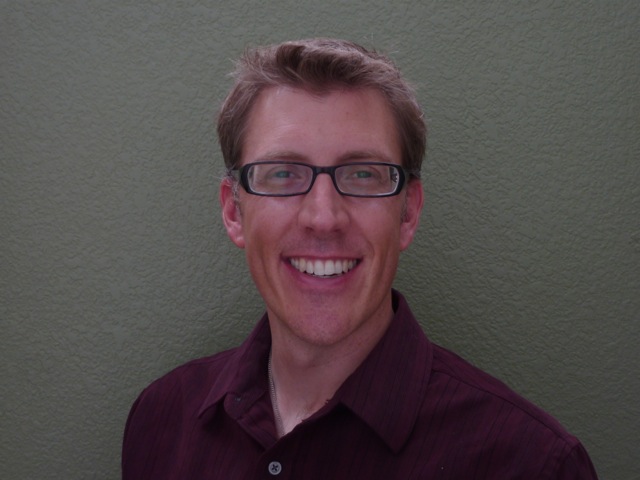
Novedge: Tell us a bit about who you are and what you do.
Andy Lasseter: I am a freelance Lighting & Event Designer specializing in corporate meetings and a 17-year veteran of Corporate AV and Live Events.I provide the creative scenic and lighting design elements that promote brand identity, focus attention and create mood onstage for conferences.
Novedge: What has been most important in developing and growing your successful event design practice?
Andy Lasseter: A sense of exploration as a deterrent of boredom. A willingness to fail in an attempt to push and make a gain. Wanting to try this or that which requires me to learn a new skill or technique.
When I design a lighting system, I design it with layers and capabilities in mind, but not a specific look. That way when I get on site and into the programming of the lights, I try combinations so see what works like I thought it would, what doesn't and even what surprises I do find which I hadn't counted on.
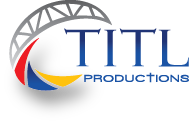
Novedge: What is a recent project that you worked on?
Andy Lasseter: This past winter I had a project, where the client had already contracted the facility, the equipment, the equipment provider and had a generic vision of what they wanted. My initial task was to develop a lighting design to create something like this.

Upon understanding the parameters of the conference I determined that their original design would not successfully accomplish their goals. There were some technical considerations that were over looked and it just lacked interest. So I developed 7 alternative options, utilizing the same equipment and materials, just reconfigured to create a $0 change. Using my "Visual Menu" page I presented a side by side summary of the client's original vision and my seven alternates.

The clients and other vendors were impressed with the new selection choices and ultimately Option #5 was chosen. The separated nature of the scenic panels created capabilities of both a unified lighting look as well as a "collage" look. A "collage" look is more flexible and creates better branding opportunities through color separation and matching.
Here is one of the final renderings.

Here are some actual show photos.
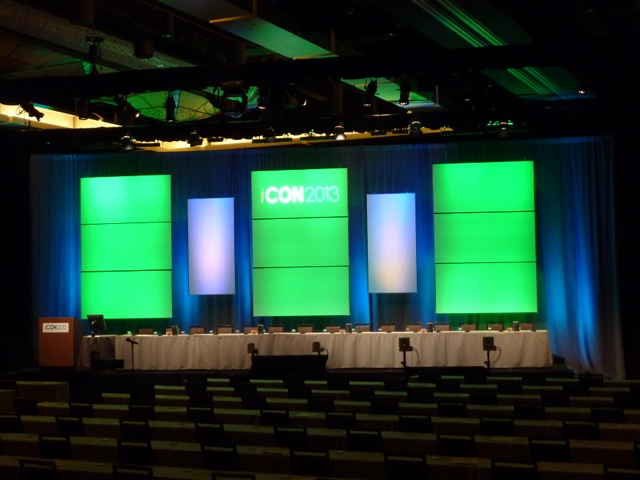

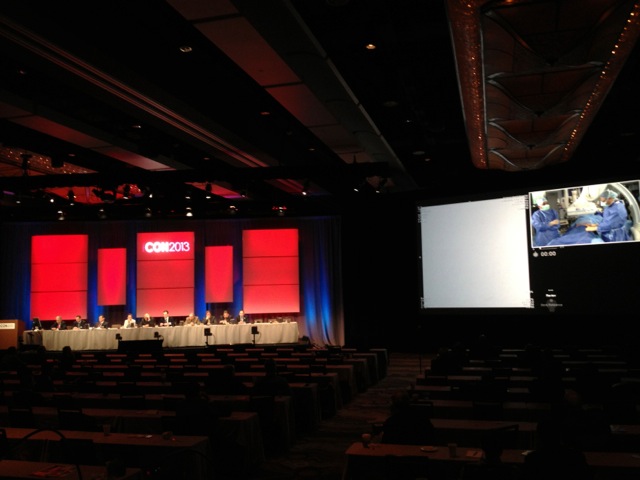
Novedge: What software do you use?
Andy Lasseter: Here is my system:
Software: Vectorworks 2013 Spotlight withRenderworks. I also have Service Select Support.
iPhoto is my photo viewer.
Hardware: 15" MacBook Pro Laptop with Dell Ultrasharp 1801 external monitor (1280×1024)
Processor: 2GHz Intel Core i7
Memory: 8GB 1333 MHz DDR3
Graphics: AMD Radeon HD 6490M 256MB
OS: OSX 10.8.3
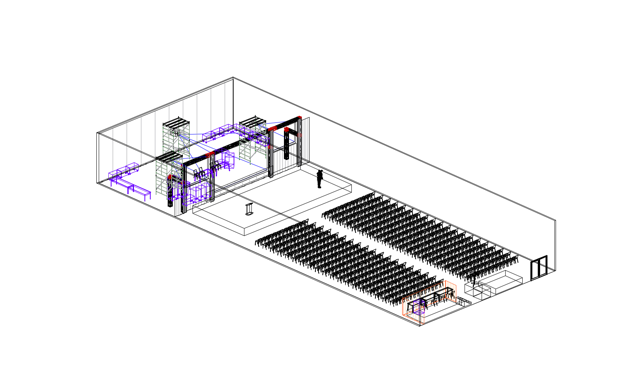
Novedge: How do you work with clients?
Andy Lasseter: Here is how I see the situation. The client wants to put on an event to communicate a message and they have a budget to meet. My philosophy with a client is that their reputation is on the line during any event. Live events/presentations can be stressful, as there are no do-overs. My focus with a client is discovering their goals in terms of perception, branding, content, reputation, internal culture, style, budget, etc. I then emphasize their goals through the psychology of design: imagery, color, mood, shape, line, texture, etc., while working within the budget parameters.
Communicating with a client typically starts over the phone. We may or may not meet in person. Back and forth emails of PDFs, images and sketches lead to an initial offering of a fiscally responsible Visual Menu within a week or so. There is no point in designing a project the client can't afford. Also a design I may gravitate to is not what the client may gravitate to. So my Visual Menu is important as a display of options, all within budgetary range, from which the client can make a choice.
Upon choosing a set, staging configuration, I coordinate vendors, budgets, safety approvals and plan venue coordination, labor & trucking and plan onsite schedules.

Novedge: How do you use the drawings?
Andy Lasseter: The drawings I create are the backbone of the entire project and everyone relies on different portions at different times. Here is a lifecycle of how I use the drawings and with which parts of the production I am working with.
Early-Process:
with Clients – We rely on initial renderings to determine seating space/audience sizes, choose overall scenic configurations and determine venue requirements. We also use initial renderings for preliminary AV quoting and to select vendors and build the production team.
Mid-process:
with AV vendors – We use drawings to determine technical details to determine equipment lists, transportation requirements, installation schedules and labor needs
with Rigging Vendors – I submit for approval technical drawings with calculated weight loads and equipment heights, etc.
with Venues – Client and/or I supply seating diagrams for fire marshall approval, scheduling of venue setup labor and materials
with Clients – we go through revisions fine tuning audience numbers and seating adjustments.
Late Process/On site:
with on site crews – Drawings are the non-verbal communication tool that keeps crews and equipment working efficiently by showing the plan both in a broad sense and detailed sense.
Floor plan drawings: indicate where to unload equipment to, where and how to set equipment up.
Elevation drawings: indicate where and how to construct scenery, lighting and video.
Renderings: give lighting programmer and scenic artists the vision of the end goal so all departments can work concurrently.
with venue setup staff – I confirm my pre-supplied seating and table layouts allowing venue setup staff to work without our supervision saving production star overtime.
As research material:
with same client – We use drawings as a paper trail in cases of billing disputes and overcharging, by vendors, venues, etc.
with same client returning – We use past renderings as a historical log of venues and scenic configurations, so that we can avoid repetition of theme, and of venue problems.
with new client – I use renderings to spark imaginations during initial introductions and as proof of my processes.

Novedge: What is the best advice you have ever received in regards to your career?
Andy Lasseter: The best career advice I got came from my father during college. After a semester of failing my advanced engineering classes while excelling in my theatre classes, my dad saw that I was bored with the challenges of engineering while rejuvenated by the challenges of theatre. Instead of admonishing me for my failed classes, he acknowledged where my passions were and what brought my contentment. My resultant career is one I love to wake up to everyday: I combine theatre design and basic engineering understanding to create unique events for people to experience.
The lesson I learned is that when we stay focused on our passions, we work hard, we innovate and we succeed.
Interested in seeing more? Join Andy Lasseter on Vectorworking and connect with him on Twitter.
Also in NOVEDGE Blog
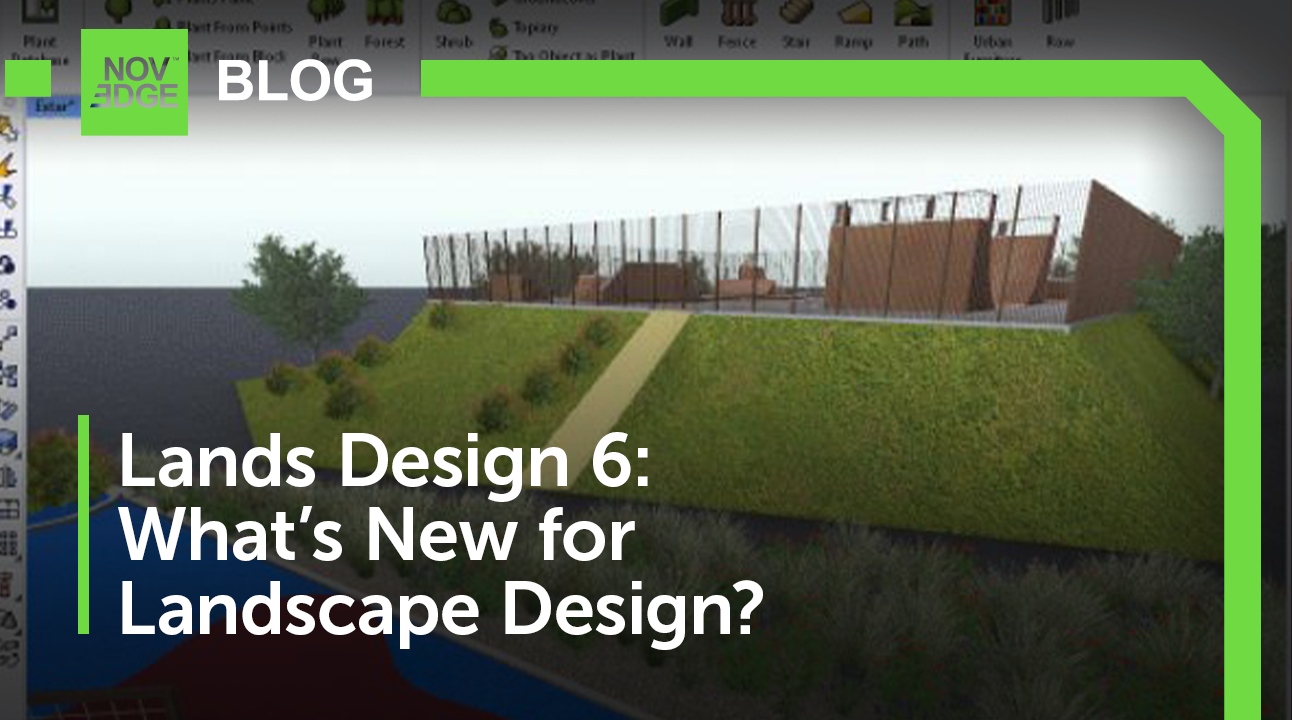
Discover the Enhanced Features of Lands Design 6: Intuitive Interface, Rhino Plugin Integration, and Advanced Design Tools
April 30, 2024 3 min read
Read More
Maxon One Spring 2024 Release Packs Particle Power, Toon Shading, and More
April 10, 2024 4 min read
Read MoreSubscribe
Sign up to get the latest on sales, new releases and more …



